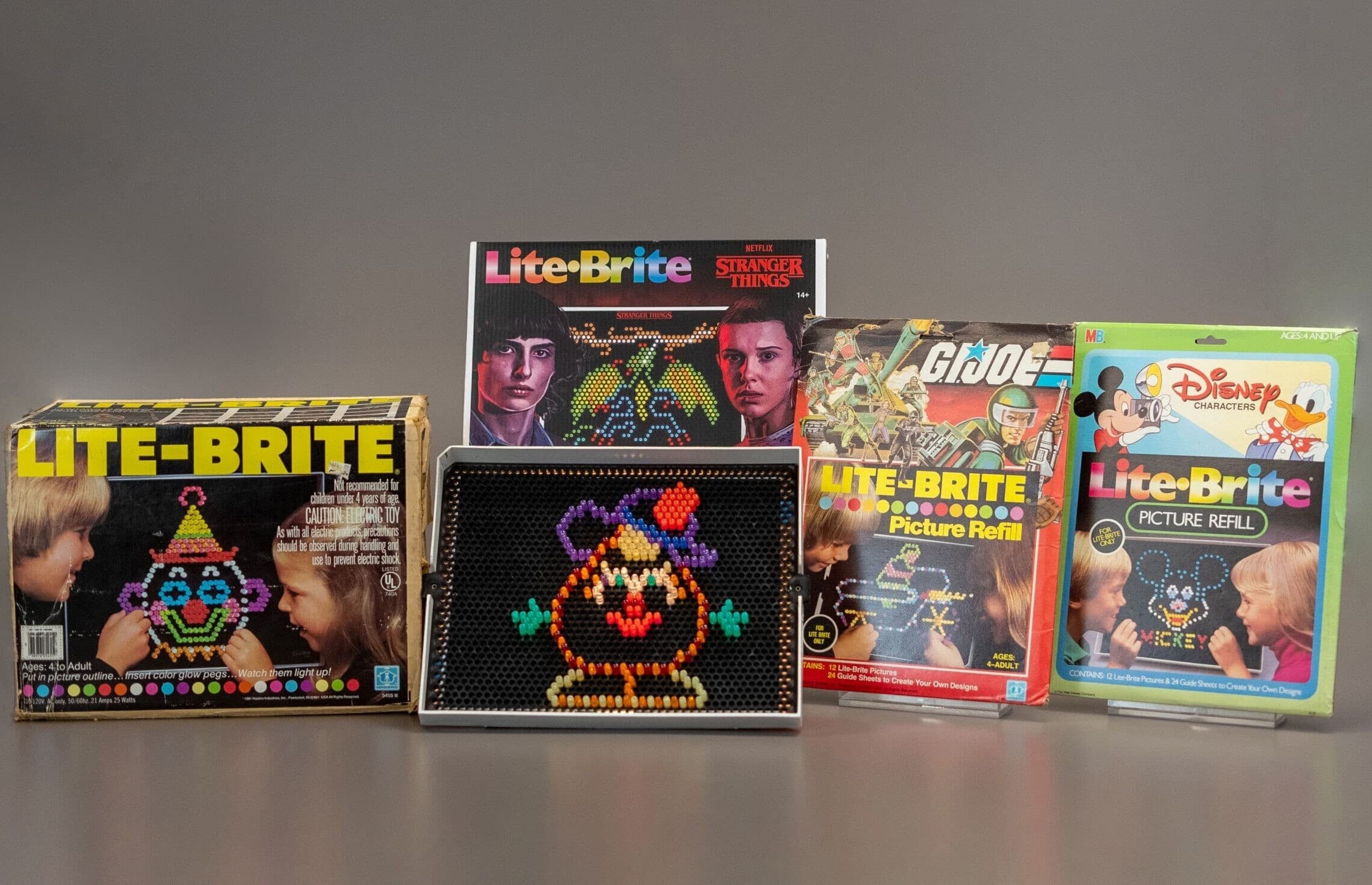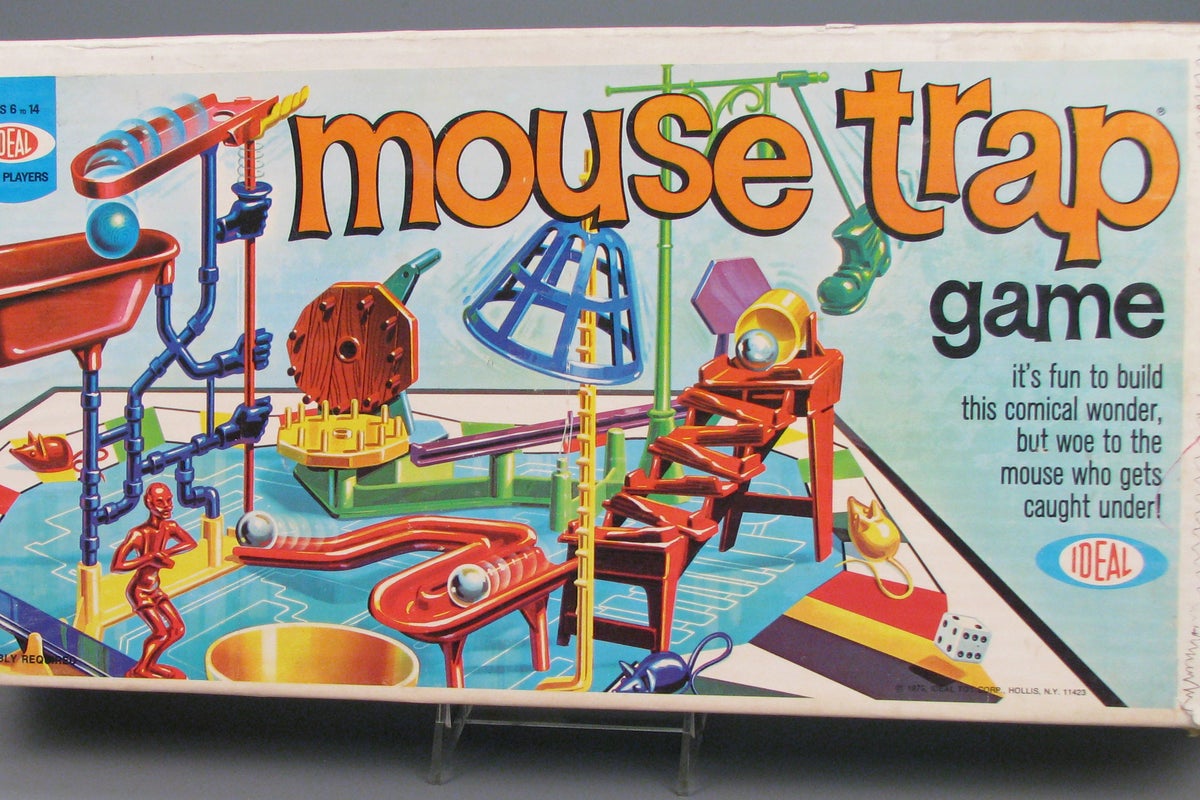- News
- World
- Americas
Meyer designed dynamic toys that remained popular for decades.
Safiyah RiddleTuesday 25 November 2025 23:08 GMT open image in galleryIn interviews, Meyer often drew parallels between aerospace engineering and toy design, saying both required ingenuity and teamwork. (The Strong National Museum of Play via AP)
open image in galleryIn interviews, Meyer often drew parallels between aerospace engineering and toy design, saying both required ingenuity and teamwork. (The Strong National Museum of Play via AP)
The latest headlines from our reporters across the US sent straight to your inbox each weekday
Your briefing on the latest headlines from across the US
Your briefing on the latest headlines from across the US
 Email*SIGN UP
Email*SIGN UPI would like to be emailed about offers, events and updates from The Independent. Read our Privacy notice
Burt Meyer, the inventive mind behind iconic toys such as Rock ’Em Sock ’Em Robots, Lite-Brite and MouseTrap, has died at the age of 99.
He died on October 30, confirmed by Rebecca Mathis, executive director at King-Bruwaert House in Burr Ridge, Illinois, where he lived.
Meyer’s creations emerged during the postwar boom, a period when plastic molding and mass production revolutionized how American children played.
Capitalizing on this shift, he designed dynamic toys that remained popular for decades. Meyer’s genius lay in his ability to combine a boundless childlike imagination with a pragmatic understanding of machines.
 open image in galleryLite-Brite was a hit, earning spots on Time Magazine’s list of 100 greatest toys and in the Strong National Museum of Play’s hall of fame. (The Strong National Museum of Play via AP)
open image in galleryLite-Brite was a hit, earning spots on Time Magazine’s list of 100 greatest toys and in the Strong National Museum of Play’s hall of fame. (The Strong National Museum of Play via AP)The idea for Lite-Brite came in 1966 when Meyer was walking in Manhattan with Marvin Glass, who owned one of the largest toy design companies at the time, and the two men passed a window display featuring hundreds of colored lights. Engineers at the company doubted that electic lights could be safely adapted for children, according to Tim Walsh, who interviewed Meyer for his 2005 book “Timeless Toys.”
Meyer, an employee at Marvin Glass & Associates, insisted it could.
“There’s billions of ideas out there,” Walsh wrote, “but executing them into a final creative solution is often the hard part.”
Meyer came up with a small backlit box and black paper sheets that allowed kids to create illuminated patterns. Lite-Brite was a hit, earning spots on Time Magazine’s list of 100 greatest toys and in the Strong National Museum of Play’s hall of fame. New versions are still being sold.
Meyer had a similar role with a design team that reimagined a bulky boxing arcade game for home use. The original concept stalled in development after a featherweight boxer died from a brain injury, making any toy that invoked the tragedy unmarketable, company leaders thought.
Meyer revisited the idea with a simple shift. “This is too good to pass up,” he recalled saying in a 2010 interview. “Let’s take it away from humanity, let’s make it robots. And we won’t have them fall over, we’ll have something funny happen.”
The result was Rock ’Em Sock ’Em Robots, a small game where players control the fighters’ fists by pressing buttons on joysticks. A player wins by hitting the jaw of the opposing robot, theatrically popping up the spring-loaded head.
The toy remained recognizable to later generations, appearing in the film Toy Story 2, and the toy company Mattel announced plans in 2021 for a live action movie adaptation.
Meyer launched his own firm, Meyer/Glass Design, in the mid-1980s. The company developed numerous best-sellers including Gooey Louie, where children picked boogers our of Louie’s nose, and the Pretty Pretty Princess board game. His son, Steve Meyer, ran the business until 2006, according to The New York Times.
Born in 1926 as Burton Carpenter Meyer, he enlisted in the Navy and served for two years as an aircraft mechanic. After retiring from toy making, he moved to Downers Grove, a suburb of Chicago, where he built small planes and could be seen deftly steering them aloft from a nearby private airfield well into his 80s.
In interviews, Meyer often drew parallels between aerospace engineering and toy design, saying both required ingenuity and teamwork.
“When you’re flying the airplane, use every resource that you have in there. That’s why we were able to turn out so many successful products,” Meyer said, crediting his success to the highly collaborative environment at Marvin Glass & Associates.
Meyer's car had a vanity plate that said TOYKING, and by most accounts, he was. In a 2010 interview, he said he was still delighted by telling people what he did for a living, and having them respond: “Oh, I played with that!”




